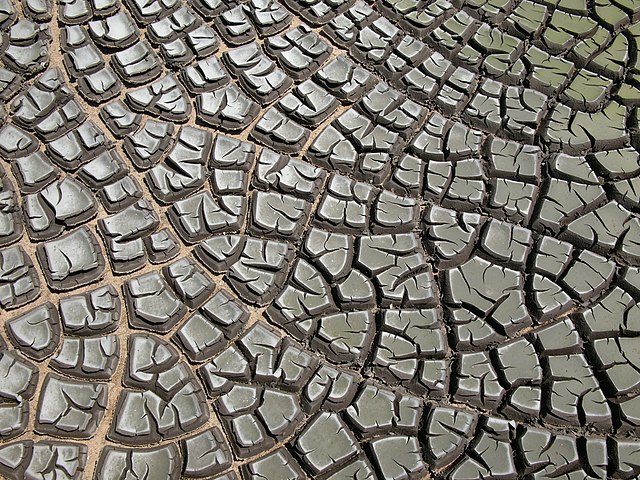Desiccation is the state of extreme dryness, or the process of extreme drying. A desiccant is a hygroscopic substance that induces or sustains such a state in its local vicinity in a moderately sealed container. The word desiccation comes from Latin de- 'thoroughly', and siccare 'to dry'.
Desiccation cracks in sludge
Centripetal desiccation cracks in the Lower Jurassic Moenave Formation at the St. George Dinosaur Discovery Site at Johnson Farm, southwestern Utah. A dinosaur footprint is at center.
A vacuum desiccator (left) and desiccator (right). Silica gel with cobalt chloride indicator placed in the lower shelf is used as the desiccant.
Callistemon hybrid desiccated by heat and dryness (Sydney)
Drying is a mass transfer process consisting of the removal of water or another solvent by evaporation from a solid, semi-solid or liquid. This process is often used as a final production step before selling or packaging products. To be considered "dried", the final product must be solid, in the form of a continuous sheet, long pieces, particles or powder. A source of heat and an agent to remove the vapor produced by the process are often involved. In bioproducts like food, grains, and pharmaceuticals like vaccines, the solvent to be removed is almost invariably water. Desiccation may be synonymous with drying or considered an extreme form of drying.
Laundry hung on a clothes line in a drying room (dehumidifier in the background and duct for ventilation in the ceiling)
Drying of fish in Lofoten in the production of stockfish






